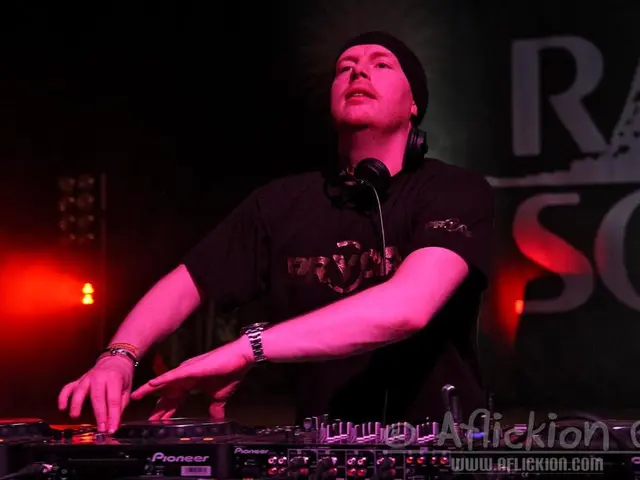Right Side Headache Symptoms, Root Causes, Interpretations, and Speedy Relief Strategies
Freshening Up Headache Knowledge: A Sideways Glance at Right-Sided Headaches
Let's chat about headaches, shall we? They're a pain – no pun intended. You might experience them on one side of your head, and we're here to help you figure out why.
Life's Little Nuisances: Why the Right Side?
There's a plethora of reasons for a headache on the right side, some singling out that specific side, while others may affect both but can, in some instances, lean more towards the right.
The Singular Side: What's Going On?
- Temporal Arteritis: This inflammation of the temporal artery, usually just on one side, can cause fatigue, jaw pain, as well as tender temples[1].
- Trigeminal Neuralgia: This condition brings intense facial and head pain, mostly affecting one side at a time, resulting from a disruption to the trigeminal nerve at the base of the brain[2].
- Sinus Headaches: Yep, you guessed it! Those with a deviated septum are more prone to this type of headache, often occurring on only one side[1].
Both Sides Now: Conditions that Affect Both Sides but May Lean Right
- Occipital Neuralgia: Typically affecting both sides, but may cause one-sided symptoms. This condition occurs when the occipital nerves, running from the top of the spinal cord to the scalp, become damaged or inflamed, leading to sharp pain at the back of the head and neck, along with sensitivity to light[1].
Additional potential causes include allergies, fatigue, head injury, infections, fluctuations in blood sugar levels, dehydration, muscle strains or knots in the neck, tumors, and certain medications[1].
Pill Poppers: Medication Overuse Headaches
Headaches can be a pesky side effect of prescription or over-the-counter medications. Regular use of over-the-counter painkillers like acetaminophen, aspirin, and ibuprofen can lead to what's known as a medication overuse headache, a common type that may affect a significant percentage of the global population[1].
Which Headache is Which?
There are over 150 types of headaches out there. The most likely suspects for a headache on one side are migraines, cluster headaches, or tension headaches[1].
Oh, Migraines!
Genetics play a role in migraines, which cause severe symptoms like pulsating pain, nausea, sensitivity to light and sound, sensitivity to smell, and dizziness[1].
Note that migraines may not always present on the same side with each episode[1]. Constant headaches on one side could indicate a more serious issue, like a tumor.
The Painful Cluster
Cluster headaches are severe headaches that occur in cyclical patterns[2]. The pain is intense and usually around one eye, but may also radiate to other areas of the head and face[2]. People typically experience frequent headache attacks for weeks or months before a period of remission[2].
Tense Times: Tension Headaches
Tension headaches are the most common type, affecting around 1 in 5 people[3]. Though typically bilateral, tension headaches can sometimes focus on one side of the head, especially if posture or muscle tension is uneven[3].
When to Ring the Doctor
Many headaches resolve themselves without treatment. However, if you experience headaches regularly, it's a good idea to consult a healthcare professional to identify the underlying cause[1].
If you experience the following symptoms alongside a headache, seek immediate medical attention: vision changes, confusion, fever, head injury, increased pain during movement, neck stiffness, numbness, personality or cognitive changes, rash, sleep disturbances, slurred speech, weakness[1].
One-sided headaches can be a cause for concern and may require a medical evaluation[1].
Frequently Asked Questions
Understanding the location of a headache can help a healthcare professional diagnose the type of headache affecting you and plan appropriate treatment[1].
For example, headache pain at the front or on one side of the head may indicate migraine or cluster headaches[1]. Some headaches may go away on their own, but severe, persistent, or progressively painful headaches may require medical attention[1].
Dehydration can cause or worsen headache symptoms and headache disorders. Staying hydrated is the best method for preventing dehydration headaches[1].
Treatment for dehydration headaches usually involves rehydrating the body[1]. Migraines may affect one side of the head, but they don't always present on the same side[1].
Remember, a one-sided headache is not always a sign of a migraine. Other causes include neurological issues, tension headaches, medication side effects, and allergies[1].
Special Language Corner
Want to learn more about headaches in Spanish? Check out this article!
[1] https://www.healthline.com/health/headache-on-right-side[2] https://www.mayoclinic.org/diseases-conditions/trigeminal-neuralgia/symptoms-causes/syc-20354026[3] https://www.ninds.nih.gov/Disorders/All-Disorders/Tension-Headache-Information-Page[4] https://www.healthline.com/health/headache/cluster[5] https://www.migraine.com/article/what-causes-a-one-sided-headache
- In some instances, a right-sided headache might be due to Qulipta, a medication used to treat migraine in adults with frequent episodes.
- Sciencing the reasons for a right-sided headache can help personas, especially those naive to health-and-wellness matters, identify potential triggers or underlying conditions, such as migraine personas, cluster headaches, or tension headaches.
- Established conditions like temporal arteritis and trigeminal neuralgia may also cause right-sided headaches, inducing symptoms like jaw pain and facial pain, respectively.
- Mental-health issues like stress or anxiety can sometimes result in right-sided headaches due to muscle tension in the head and neck, leading to tension headaches.
- When experiencing a one-sided headache, it is essential to differentiate between a mere headache and indications of more serious health issues, such as a brain tumor or medication side effects, and seek immediate medical attention if necessary symptoms arise.








